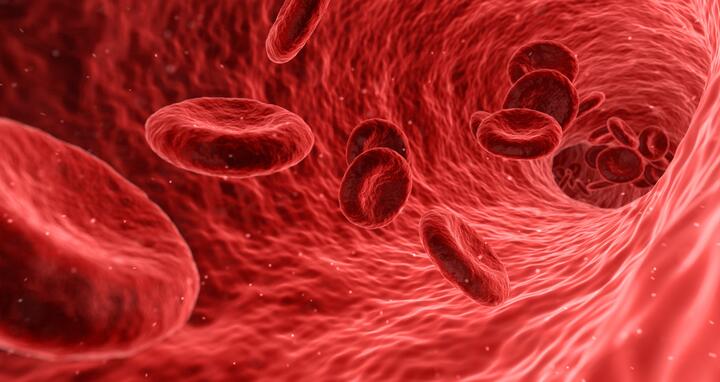How a Mutated Gene Triggers Hypertension
One of the most prevalent causes of secondary hypertension, also known as arterial hypertension, is primary hyperaldosteronism (PHA). In PHA, the adrenal cortex produces too much of the hormone aldosterone, which plays an important role in the body's balance of water and salt and in blood pressure regulation. In the presence of high aldosterone concentrations, the kidney resorbs larger than usual amounts of sodium and water. This increases the blood volume, and the blood pressure rises.
On the trail of the mechanism is a team working with Professor Thomas Jentsch of the Leibniz Institute for Molecular Pharmacology (FMP) joined by their peers from the Max Delbrück Center for Molecular Medicine (MDC) in Berlin and their French peers in Paris working around Maria Christina Zennaro. This team now discovered that a gene mutation causes PHA because the ion channel named ClC-2 in the adrenal cortex remains permanently open. This starts a signal cascade. In the final analysis, this cascade leads to the observed increase in aldosterone biosynthesis. Recently, the renowned science magazine Nature Genetics published the discoveries by Thomas Jentsch and his peers.
Patient's exomes revealed the reason for excess aldosterone
Jentsch explains: “Until now, only knockout mutations of the CLCN2 gene were known. These mutations prevent the ClC-2 channel from forming or they lead to defective ClC-2 channels.” The resulting clinical pattern includes a form of leukodystrophy, which causes damage to the white brain matter. Among the symptoms of the disease are gait abnormalities. “However, the now investigated gene mutation does not result in the loss of a function but in an increased flow through the channel. The mutation has the effect that the channel no longer closes in response to changes in voltage and pH”, elaborates Jentsch.
Gain of function mutation in the ClC-2 chloride channel causes primary aldosteronism. The production of aldosterone, a hormone which influences blood pressure, is normally tightly regulated by Angiontensin II, which upon binding to its receptor, leads to closure of K+ channels, cell depolarization, and Ca2+ influx through voltage-gated calcium channels. Ca2+ increase stimulates enzyme expression required for aldosterone synthesis. In this study, a patient with high aldosterone levels was found to have a mutation in the ClC-2 chloride channel, which in the absence of Angiotensin II, leads to a dramatic efflux of Cl- ions resulting in depolarization and consequently aldosterone over-production.
In order fully understand PHA, the French scientists analyzed the exomes of patients who had already shown the first symptoms of the disease before their 25th birthday. The exome analyses of healthy persons served as controls. An exome is the part of the genome, which codes for the building plan of a protein. In the course of their experiments, they came across a then still unknown mutation in the CLCN2 gene. They turned to Jentsch, the worldwide leading expert in ClC channels.
Corinna Göppner from the group around Thomas Jentsch was part of the study. She reports, “In view of the inquiry by the French scientists, we developed a hypothesis to explain how the mutation could lead to PHA.” Usually, the hormone angiotensin II causes the potassium channels in the adrenal cortex to close so that positively charged potassium ions can no longer stream out of the cells. This changes the membrane potential and results in its depolarization. In turn, the voltage-dependent calcium channels open. Now, calcium ions stream into the cell and trigger a signal cascade. The biosynthesis of aldosterone occurs at the end of this cascade.
The ion channel exists in the adrenal cortex of mice
“The team members were fascinated to learn that the mutation discovered in the patient exomes was located exactly in the ClC-2 section, which Thomas Jentsch had identified as early as 1992; mutations in this section indeed open the channel. We now hypothesize that the open chloride channels allow negatively charged chloride ions to stream out of the cell continuously. This changes the cell voltage, which leads to the opening of the calcium channels independent of the presence of angiotensin II. Under such circumstances, the adrenal cortex cell churns out aldosterone continuously.”
In a mouse model, the scientists were able to show that the ClC-2 channel actually exists in the outer layer of the adrenal cortex, which is known as zona glomerulosa. Dr. Ian Orozco explains: “By way of the patch-clamp technique, the team members demonstrated that chloride ions actually flow through this channel. However, the scientists observed no ion flow when the gene for the channel was inactivated in the mice.” Dr. Ian Orozco actually performed the lion's share of these experiments.
In the next step, the scientists compared the channel with its mutated counterpart after producing it in the egg cells of claw frogs. Orozco reports, “The experiment shows that the gene mutation found in the patients indeed leads to an increased current flow.”
Is there a substance to help patients?
Using zona glomerulosa cell lines, the scientists demonstrated a lower membrane voltage and found more aldosterone when the cells had the mutation. Cells with the mutated gene also synthesized the enzymes for the aldosterone synthesis in larger amounts. Calcium channel blockers stopped the aldosterone overproduction. As Corinna Göppner points out, “This supports our initial hypothesis very well.”
The minds of the scientists are busy thinking of a substance, which specifically blocks ClC-2 channels in adrenal cortex cells so that they can cure patients suffering from this form of PHA.
Reference
Fabio L. Fernandes-Rosa, Georgios Daniil, Ian J. Orozco, Corinna Göppner, Rami El Zein, Vandana Jain, Sheerazed Boulkroun, Xavier Jeunemaitre, Laurence Amar, Hervé Lefebvre, Thomas Schwarzmayr, Tim M. Strom, Thomas J. Jentsch and Maria-Christina Zennaro (2018): A gain-of-function mutation in the CLCN2 chloride channel gene causes primary aldosteronism. Nature Genetics. doi:10.1038/s41588-018-0053-8






